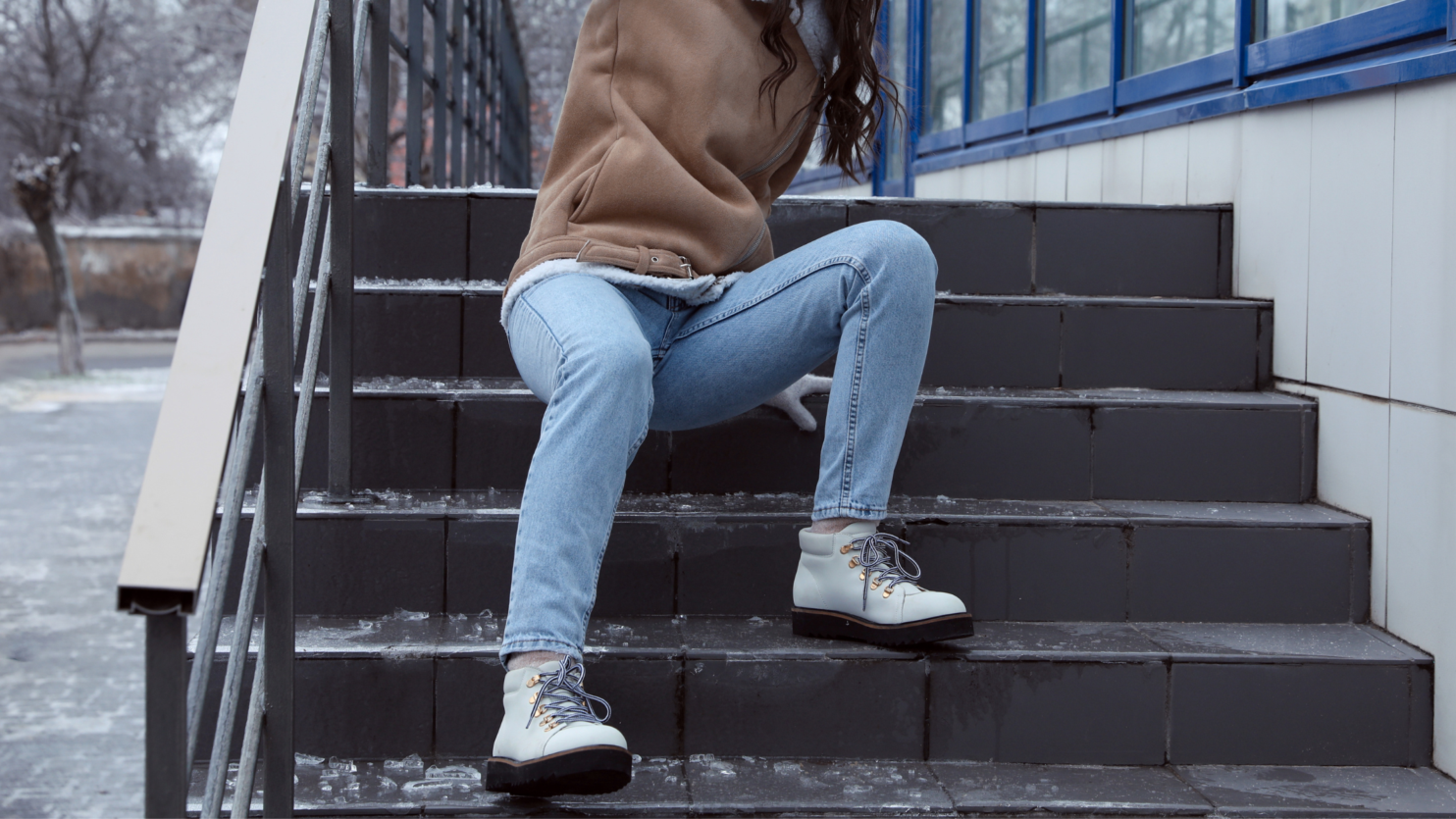As temperatures drop and winter weather sets in, icy sidewalks, wet entryways, and slick parking lots become common hazards. Slips and falls are among the most frequent causes of injury during colder months—especially for older adults or individuals with mobility issues. Fortunately, a few proactive steps can help you stay safe, steady, and confident no matter what the weather brings.
1. Choose the Right Footwear
Wearing shoes or boots with good traction is one of the most effective ways to prevent falls. Look for rubber soles with deep treads and avoid smooth leather or plastic bottoms. If you walk frequently outdoors in icy conditions, consider traction cleats or ice grips that attach to your shoes for added stability.
2. Take Small, Slow Steps
When surfaces are slippery, adjust your walking style. Shorter, slower steps help keep your center of gravity over your feet, reducing the risk of losing balance. Keep your hands out of your pockets for better stability and use handrails whenever possible on stairs or ramps.
3. Be Cautious When Exiting Vehicles
Parking lots and curbs are particularly dangerous in freezing or rainy weather. Before stepping out of your car, check the ground for ice or puddles. Hold onto the vehicle door or frame for support as you step down, and plant both feet firmly before walking away.
4. Keep Entryways Dry
Wet or melted snow tracked indoors can create hidden hazards. Use absorbent mats both outside and inside entrances, and encourage family members or coworkers to wipe their shoes. Clean up puddles quickly to prevent slips in high-traffic areas.
5. Use Salt or Sand on Walkways
Home and business owners should stay proactive about snow and ice removal. Apply rock salt or sand to driveways, sidewalks, and stairs after clearing snow. Even a thin layer of ice can be dangerous, so don’t wait until conditions worsen.
6. Improve Lighting Around Your Home or Workplace
Dim lighting can make slippery spots harder to see. Make sure walkways, porches, and parking areas are well-lit, and replace burnt-out bulbs promptly. Motion-sensor lights are a convenient way to keep entrances illuminated without wasting energy.
7. Strengthen Your Balance and Stability
Exercises that improve balance, flexibility, and strength—such as yoga, tai chi, or gentle stretching—can reduce your risk of falls year-round. A strong core and steady gait make a noticeable difference when conditions are less than ideal.
8. Know When to Ask for Help
If conditions look too risky, don’t hesitate to ask for assistance. Whether it’s a neighbor helping with snow removal or a coworker walking beside you on an icy path, an extra set of hands can make all the difference.
Staying Safe This Winter
Slips and falls may seem like simple accidents, but they can lead to serious injuries and long recovery times. By being proactive—choosing the right footwear, maintaining your surroundings, and moving mindfully—you can minimize your risk and move safely through the season.
Oops! We could not locate your form.

